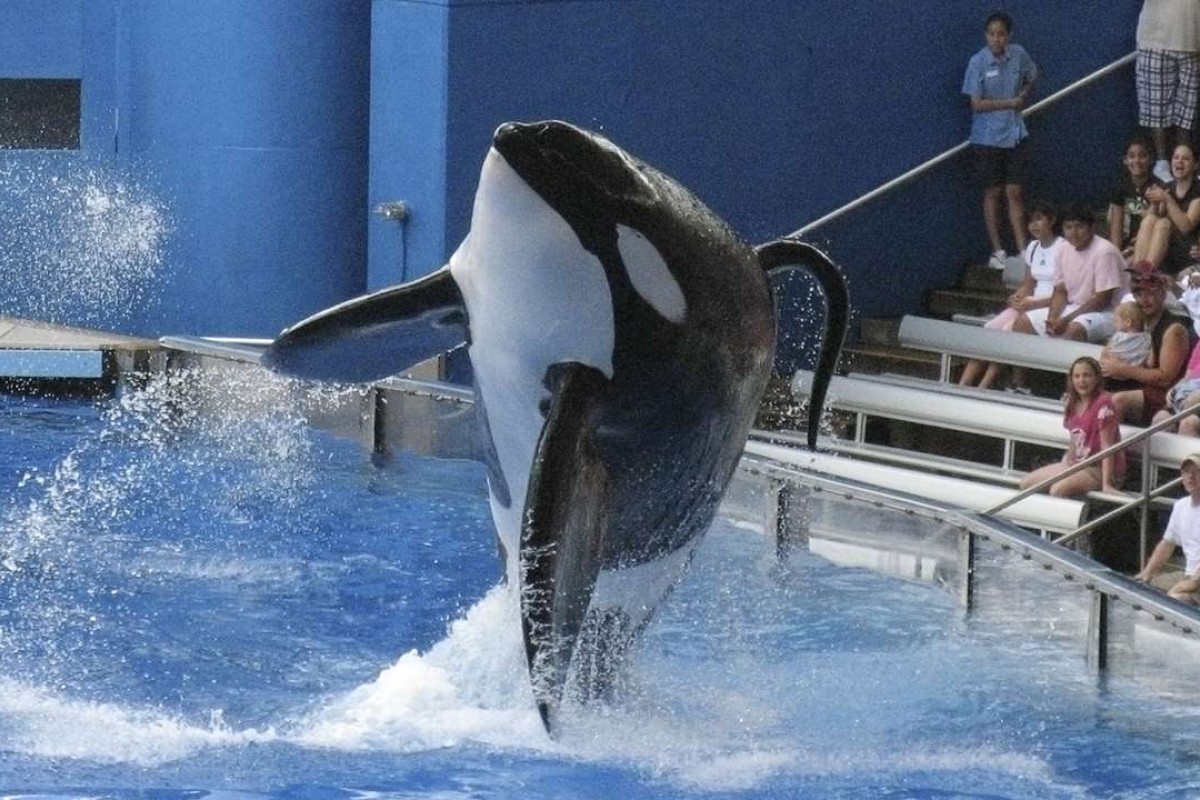 Goodbye, Tilikum.
Goodbye, Tilikum.When Tilikum first came to SeaWorld, in Orlando, in the US state of Florida, 25 years ago, the masses enthusiastically bought tickets to see killer whales like him perform.
But Tilikum’s difficult life, which included his involvement in three human deaths, helped bring about an end to SeaWorld’s orca tricks and breeding.
Tilikum, whose life inspired the anti-captivity documentary Blackfish after he killed a trainer in 2010, died Friday. Tilikum had been battling a serious and persistent bacterial lung infection, SeaWorld said.
Tilikum helped the theme-park company grow its orca collection by fathering more than a dozen offspring. But the whale also triggered a downward spiral for SeaWorld Entertainment after battering and drowning trainer Dawn Brancheau in 2010.
That unleashed a torrent of controversy and led to the documentary Blackfish. The 2013 movie examined Tilikum’s life and made the case that the stress of captivity turned him into a killer. To captivity opponents, Tilikum’s story represents everything that’s wrong with keeping orcas in tanks.
More than three years after the film’s release, SeaWorld is still dealing with the resulting financial and public relations fallout. Facing declining attendance and cancelled corporate partnerships, SeaWorld last year ended breeding, meaning the eventual end of its orca collection.
Tilikum “was a phenomenal ambassador” for wildlife, said Brian Ogle, an anthrozoologist at Beacon College in Florida. “Because of him, people are very well-connected to orcas. He created awe and inspired them.”
At the same time, Ogle said, “because of his size and behaviour, he definitely sparked that conversation of, ‘Is this appropriate?’”
SeaWorld said in a statement Tilikum had received great care. But it also acknowledged his troubled past.
“Tilikum’s life will always be inextricably connected with the loss of our dear friend and colleague, Dawn Brancheau,” SeaWorld said in a statement. “While we all experienced profound sadness about that loss, we continued to offer Tilikum the best care possible, each and every day, from the country’s leading experts in marine mammals.”
SeaWorld has maintained that it had kept Tilikum – nicknamed “Tilly” – stimulated through training, and with toys including oversized plastic discs and blocks of ice.
The animal-welfare community called Friday for SeaWorld to release its other killer whales into seaside sanctuaries. SeaWorld has 22 whales, six of them in Orlando.
“Tilikum lived longer than almost any other captive male orca has, but his life was one of deprivation and difficulty,” Animal Welfare Institute marine mammal scientist Naomi Rose said in a news release. “It is long since time for SeaWorld to begin serious consideration of retiring all of its orcas to seaside sanctuaries. Forcing these large, intelligent, socially complex animals to live out their sometimes decades-long lives in barren concrete tanks must end.”
Rose also called for SeaWorld to make public the full results of a necropsy. SeaWorld said it will report the cause of death to the National Marine Fisheries Service as it typically does. It does not generally issue a full report. The Marine Mammal Protection Act was changed in 1994 and no longer requires those to be public record.
SeaWorld said “Tilikum’s tissues will be shared to contribute to studies that further scientific understanding of the species.”
Tilikum, estimated to be 36 years old, was captured from the waters near Iceland as a youngster and sent to the now-defunct Sealand of the Pacific in British Columbia, Canada. There, Blackfish and the book Death at SeaWorld chronicle that dominant females attacked him and he was locked in a small, darkened tank every night.
In 1991, Tilikum and two other orcas drowned trainer Keltie Byrne. According to federal documents, Sealand put the three whales up for sale about seven months later. SeaWorld had asked to receive Tilikum, saying its staff could provide veterinary care the whale could not receive in Canada.
In 1999, the naked body of Daniel Dukes, who had apparently sneaked into SeaWorld after hours for a swim, was found dead on Tilikum’s back.
Authorities later concluded Dukes drowned. They said it also appeared Tilikum bit the man’s body and tore off his swimming trunks after he died.
Because of his size – nearly 6 tonnes – and his dangerous reputation, SeaWorld took precautions with him.
Trainers could not swim with him as they often did with the theme park’s other orcas. About a dozen handlers were trained to work with him from pools’ edges. SeaWorld often kept him separate from the other whales.
Just after a show, Tilikum pulled Brancheau into the water and killed her.
After Brancheau’s death, SeaWorld made changes that included requiring trainers to stay farther away from Tilikum when working with him. However, Tilikum went back to performing the year after the attack. Even last year he was appearing in shows.
Trainers no longer perform in the water with whales, a recommendation the federal Occupational Safety and Health Administration (Osha) made after Brancheau’s death. SeaWorld Entertainment decided not to go to the Supreme Court with an appeal of the Osha citation barring trainers from performing with the orcas.
